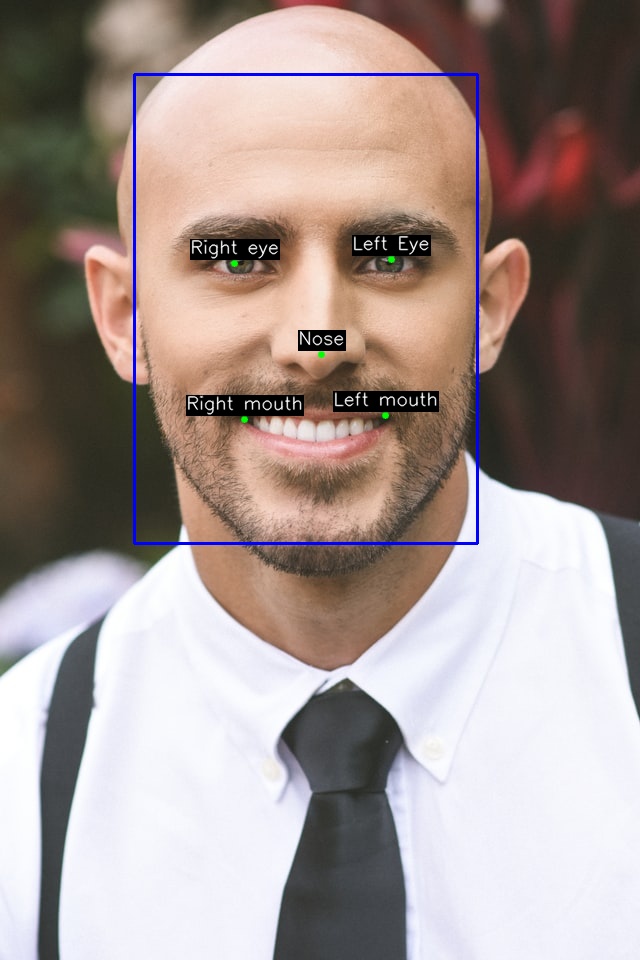Face Detection¶
-
class Facechip¶
Class which is used to manage a face chip image. A face chip represents and aligned and cropped face image. A Facechip can be in CPU memory or GPU memory.
-
void Trueface::Facechip::saveImage(const std::string &filepath)¶
Save the face chip to disk.
- Parameters
filepath – the filepath where the face chip should be saved, including the image extension.
-
ErrorCode Trueface::Facechip::loadImage(const std::string &filepath, bool gpuMemory = false, int gpuIndex = 0)¶
Load the face chip from disk.
- Parameters
filepath – the filepath of the facechip to load.
gpuMemory – read the image into GPU memory. This should be set to true when running GPU inference.
gpuIndex – the GPU index.
-
unsigned int Trueface::Facechip::getHeight()¶
Get the face chip height in pixels.
- Returns
Returns the face chip height in pixels.
-
unsigned int Trueface::Facechip::getWidth()¶
Get the face chip width in pixels.
- Returns
Returns the face chip width in pixels.
-
bool Trueface::Facechip::isGPUImage()¶
Is the face chip in GPU memory.
- Returns
Returns true if the face chip is in GPU memory.
-
uint8_t *Trueface::Facechip::getData()¶
Get the decoded image buffer.
- Returns
Returns the decoded image buffer.
-
ErrorCode Trueface::SDK::detectFaces(const TFImage &tfImage, std::vector<FaceBoxAndLandmarks> &faceBoxAndLandmarks)¶
Detect all the faces in the image. This method has a small false positive rate. To reduce the false positive rate to near zero, filter out faces with score lower than 0.90. Alternatively, you can use the
Trueface::FaceDetectionFilterconfiguration option to filter the detected faces.The face detector has a detection scale range of about 5 octaves. ConfigurationOptions::smallestFaceHeight determines the lower of the detection scale range. E.g., setting ConfigurationOptions::smallestFaceHeight to 40 pixels yields the detection scale range of ~40 pixels to 1280 (=40x2^5) pixels.
- Parameters
tfImage – [in] the input image returned by preprocessImage().
faceBoxAndLandmarks – [out] a vector of FaceBoxAndLandmarks representing each of the detected faces. If not faces are found, the vector will be empty. The detected faces are sorted in order of descending face score.
- Returns
error code, see ErrorCode.
The recall and precision of the face detection algorithm on the WIDER FACE dataset:
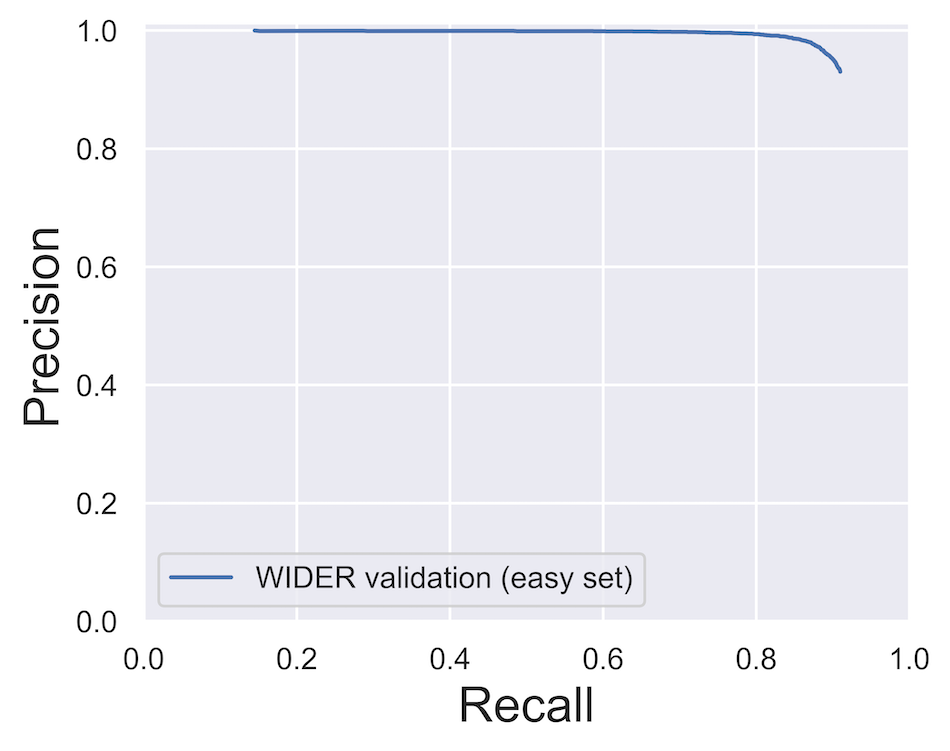
The effect of face height on similarity score:

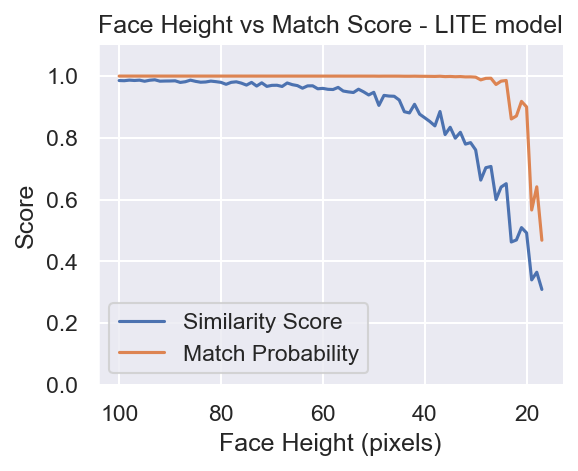
-
ErrorCode Trueface::SDK::detectLargestFace(const TFImage &tfImage, FaceBoxAndLandmarks &faceBoxAndLandmarks, bool &found)¶
Detect the largest face in the image. This method has a small false positive rate. To reduce the false positive rate to near zero, filter out faces with score lower than 0.90. Alternatively, you can use the
Trueface::FaceDetectionFilterconfiguration option to filter the detected faces. See detectFaces() for the detection scale range.- Parameters
tfImage – [in] the input image returned by preprocessImage().
faceBoxAndLandmarks – [out] the FaceBoxAndLandmarks containing the landmarks and bounding box of the largest detected face in the image.
found – [out] whether a face was found in the image.
- Returns
error code, see ErrorCode.
-
ErrorCode Trueface::SDK::getFaceLandmarks(const TFImage &tfImage, const FaceBoxAndLandmarks &faceBoxAndLandmarks, Landmarks &landmarks)¶
Obtain the 106 face landmarks.
- Parameters
tfImage – [in] the input image returned by preprocessImage().
faceBoxAndLandmarks – [in] FaceBoxAndLandmarks returned by detectFaces() or detectLargestFace().
landmarks – [out] an array of 106 face landmark points.
- Returns
error code, see ErrorCode.
The order of the face landmarks:

-
ErrorCode Trueface::SDK::extractAlignedFace(const TFImage &tfImage, const FaceBoxAndLandmarks &faceBoxAndLandmarks, TFFacechip &tfFacechip, int marginLeft = 0, int marginTop = 0, int marginRight = 0, int marginBottom = 0, float scale = 1.0)¶
Align the the detected face to be optimized for passing to feature extraction. If using the face chip with Trueface algorithms (ex face recognition), do not change the default margin and scale values.
- Parameters
tfImage – [in] the input image returned by preprocessImage().
faceBoxAndLandmarks – [in] the FaceBoxAndLandmarks returned by detectLargestFace() or detectFaces().
tfFacechip – [out] A TFFacechip to store the output facechip.
marginLeft – [in] adds a margin to the left side of the face chip.
marginTop – [in] adds a margin to the top side of the face chip.
marginRight – [in] adds a margin to the right side of the face chip.
marginBottom – [in] adds a margin to the bottom side of the face chip.
scale – [in] changes the scale of the face chip.
- Returns
error code, see ErrorCode.
-
ErrorCode Trueface::SDK::estimateHeadOrientation(const TFImage &tfImage, const FaceBoxAndLandmarks &faceBoxAndLandmarks, float &yaw, float &pitch, float &roll)¶
Estimate the head pose. Only works with images where the face is at least 100 pixels in height, otherwise returns ErrorCode::FACE_TOO_SMALL.
- Parameters
tfImage – [in] the input image returned by preprocessImage().
faceBoxAndLandmarks – [in] FaceBoxAndLandmarks returned by detectFaces() or detectLargestFace().
yaw – [out] the rotation angle around the image’s vertical axis, in radians.
pitch – [out] the rotation angle around the image’s transverse axis, in radians.
roll – [out] the rotation angle around the image’s longitudinal axis, in radians.
- Returns
error code, see ErrorCode.
The accuracy of this method is estimated using 1920x1080 pixel test images. A test image:
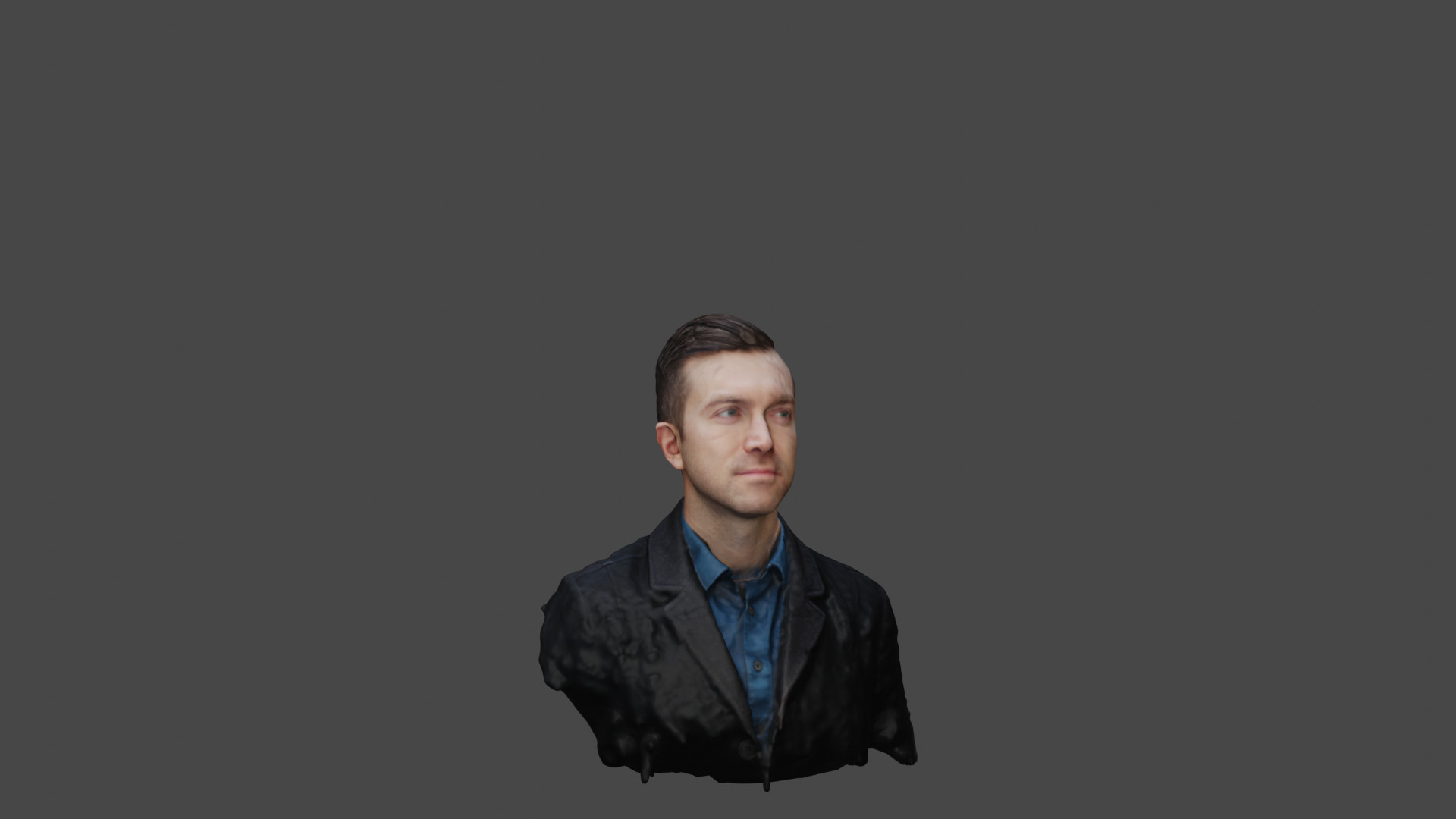
The accuracy of the head orientation estimation:
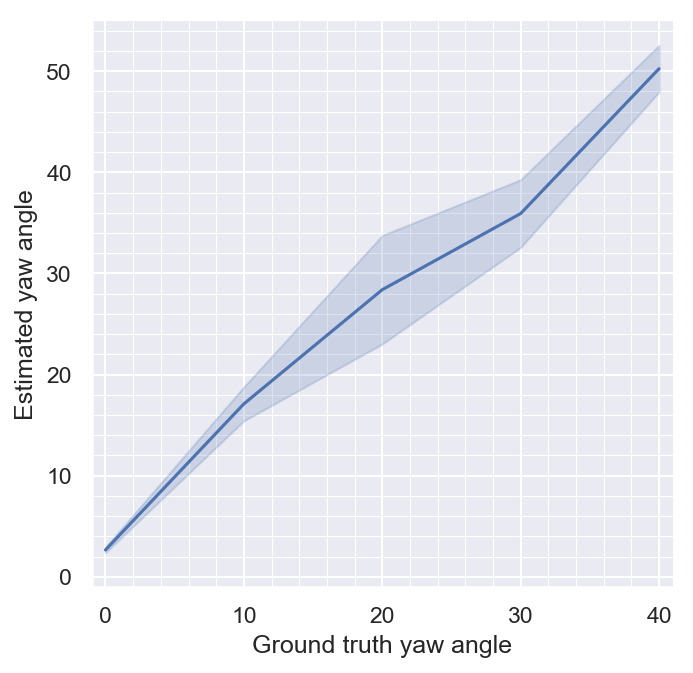
The effect of the face yaw angle on match similarity can be seen in the following figure:
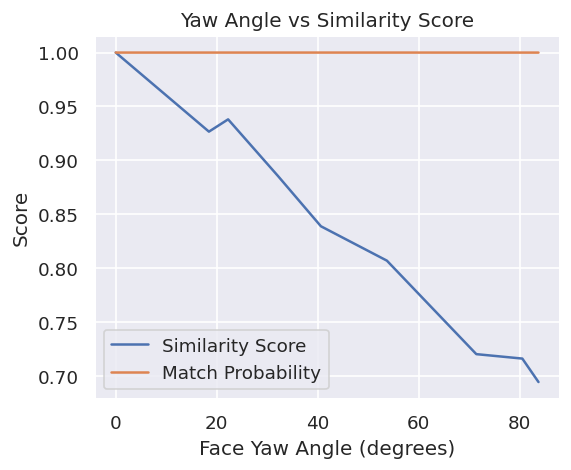
The effect of the face pitch angle on match similarity can be seen in the following figure:
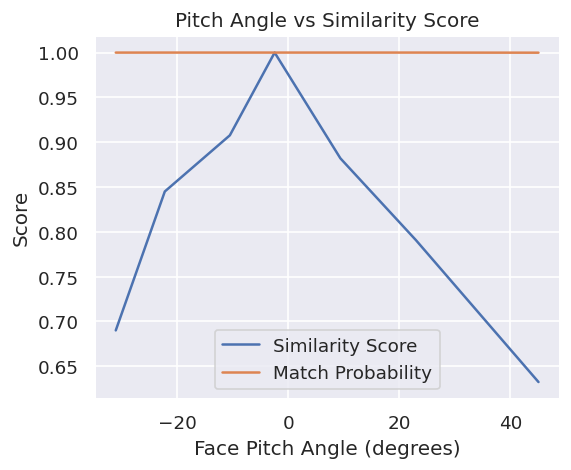
-
template<typename T>
struct Trueface::Point¶
-
struct Trueface::FaceBoxAndLandmarks¶
Public Members
-
std::vector<Point<float>> landmarks¶
A vector of Point representing the facial landmarks: subject right eye, subject left eye, nose, subject right mouth corner, subject left mouth corner.
-
float score¶
Likelihood of this being a true positive; a value lower than 0.85 indicates a high chance of being a false positive.
-
std::vector<Point<float>> landmarks¶
The order of the face landmarks:
